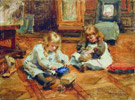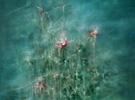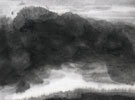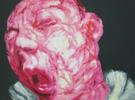
展览时间:2011-11-12 ~ 2011-11-29
展览地点:耿画廊
参展艺术家:朱沅芷
开幕时间:2011-11-12 16:30
展览介绍:
朱沅芷的创作生涯,和他的生命旅程有密切的关连。不论是时代背景,或是地缘关係、个人经歷,都对朱沅芷画作风格转变有影响。本次特展作品十分难得涵盖朱沅芷在旧金山、巴黎、纽约三地,从早期1926年至晚期1951年的油画与纸上作品。共计展出25件油画及数件纸上作品。朱沅芷个展将从11月12日起,於耿画廊台北空间展出至11月29日为止。
海外华人艺术家朱沅芷(1906-1963),生平经歷横跨世界三洲,根源亚洲,在美国和欧洲接受现代艺术之薰陶,在西方艺坛佔有一席之地。朱沅芷艺术创作丰富,包括油画、纸上作品、雕刻等。从中国移民美国,初抵旧金山,两度客居法国巴黎,最后安定於纽约终老。所居之地皆有展览,作品并为知名美术馆收藏。朱沅芷也勤於写作,创作诗,记录我见我思,撰写个人研究西方艺术心得。他亦喜爱音乐,擅长演奏中国乐器,演出传统戏曲,堪称多才多艺。
旧金山时期可说是朱沅芷接触西方现代艺术最具关键性的一站,是他艺术生涯的起点。1921年,他年仅十五岁,远渡重洋,到旧金山和已归化美国公民的父亲相聚。1925年朱沅芷进入加州旧金山纯艺术学校,在老师欧菲德的影响下,逐渐熟悉西方现代绘画,特别是共色主义、立体派和强调个人表现风格的精神。他使用冷暖、对比色调,完全以类似几何形状的色块建构形体,画作初受艺坛瞩目。
1927年,法国友人支持朱沅芷啟航巴黎,在欧陆展开他艺术生涯的另一阶段。起初,作品延续类似立体派的色韵绘画,渐渐地,用色彩度降低,转为渐层的相近色块。两度旅居巴黎的期间,朱沅芷也创作中国题材的绘画。画面几何造形减少,线条增多,趋向具象写实。 艺评多认为他成功结合西方绘画技法与东方神秘题材, 挪用欧洲现代风格,但仍维持中国特色 。
朱沅芷於1930年至1936年第一次停留纽约,1939年第二次回到纽约,自此定居、终老。晚年画风趋向写实,题材多样,所绘人物强调体积感。
The Tina Keng Gallery (Neihu) is pleased to present Yun Gee: The Art of Place, on view from November 12 to 29 (opening reception: November 12, 4:30-7:00pm). The exhibition provides a rare opportunity to see over 30 oil paintings and works on paper by Yun Gee (1906-1963), made between 1926 and 1951.
Yun Gee lived in “in between spaces” as a result of his transnational existence, having studied and practiced his art in three different cities. From his introduction to Synchromism in San Francisco, to his exploration of Cubism in Paris, and finally to his own theory of Diamondism in New York, his works show Gee’s embrace of multiple cultures and the varied teachings he encountered throughout his travels.
In 1921 Yun Gee left Guangdong Province, China, to join his father, a naturalized American citizen, in San Francisco. At the age of 19 he enrolled in the California School of Fine Arts (now the San Francisco Art Institute), where he learned about Synchromism from the American artist Otis Oldfield, who had recently returned from Paris. Gee, in turn, carried these Synchromist lessons with him to Paris, where he continued creating works that emphasized color rhythms as musical patterns and were composed of abstract shapes to reveal pictorial subjects, with a quasi-Cubist style, as is evident in the painting My First Impression of Paris (1927-1928).
Impressed by the modern techniques then prevalent in Paris, with their “distortion of forms” and “emphasis on atmosphere,” he incorporated a range of Chinese motifs while shifting to a more realistic style, in works such as Confucius (1929), Empress Yang Kwei Fei at Bath (1929), and Butterflies: Dream of Chuang-Tze (1929). These were all welcomed by the Parisian art circles in his many well-reviewed shows. He sustained this combination of a Western style with Eastern motifs when he moved to New York, where he eventually settled until his death in 1963.
While in New York his works were included in the exhibitions Paintings, Sculpture, and Drawings by American and Foreign Artists at the Brooklyn Museum of Art (1931), Murals by American Painters and Photographers at the Museum of Modern Art (1932), and Portrait of America at the Metropolitan Museum of Art (1944). All the while, he maintained his links to China. He organized fundraising exhibitions and generously donated works for disaster relief, and his native land continually served as a source for his art, such as in his political comics and satires of current events, including The Chinese Lion is Aroused (1931), Peace to China (1942), and Sinking Empire (1942), all on view in this exhibition.
Yun Gee: The Art of Place is being held in remembrance of Yun Gee.
- 2011-11-06 ~ 2011-11-18在一起——张雨辉个人油画作品展
- 2011-11-05 ~ 2011-11-30触镜——穿梭异视界
- 2011-11-06 ~ 2011-12-05抽离——郭伟作品(2010-2011)
- 2011-11-19 ~ 2012-01-19目之所及
- 2011-11-20 ~ 2012-01-22曙光别墅——吕松个展
- 2011-11-12 ~ 2011-12-11西安首届现代艺术展——30年纪念展
- 2011-11-25 ~ 2011-12-23安全岛——黎卓华个展
- 2011-11-08 ~ 2011-11-19重温——三版工坊十五年回顾展
- 2011-11-20 ~ 2012-01-30Henry Hudson——Between A Rock and A Hard Place
- 2011-11-12 ~ 2011-12-31Unmask




